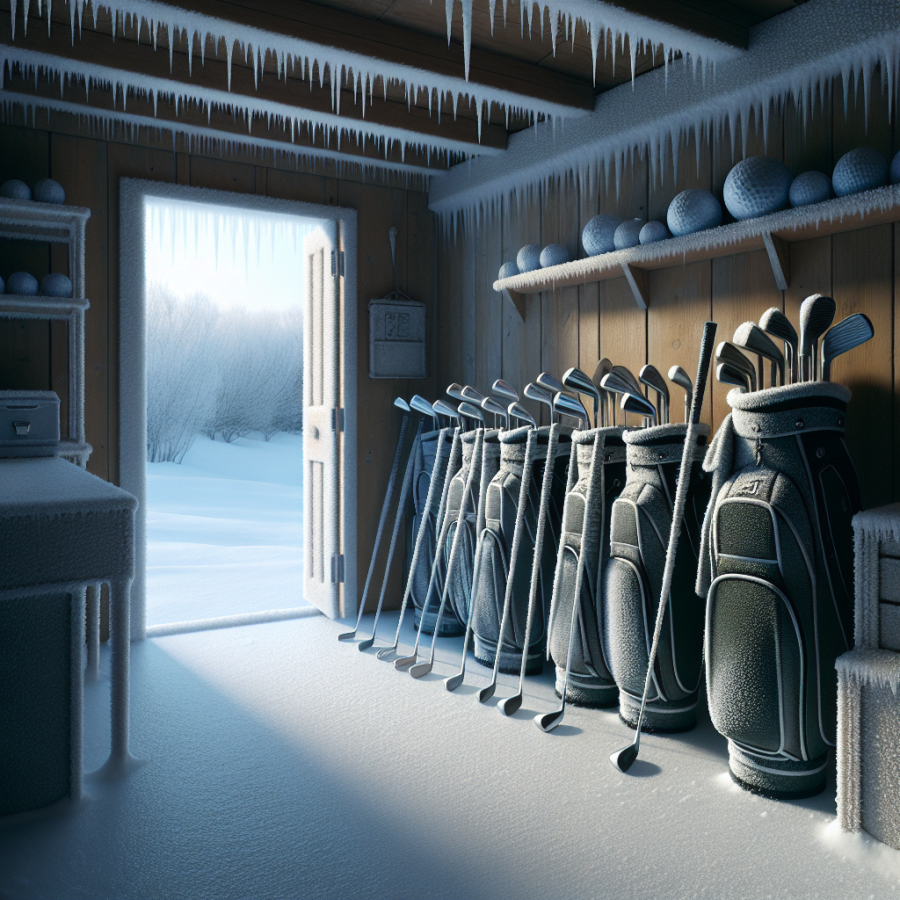Crucial Tips for Properly Storing Your Golf Clubs During the Cold Months
The cold months can significantly affect the integrity and performance of your golf clubs. It is essential to take suitable precautionary measures to store your clubs properly during these seasons. Here are some critical tips for proper golf club storage during the cold months:
1. Actually, Clean Your Clubs: Start by thoroughly cleaning your clubs. Get rid of any dirt, grass, or moisture from the club's head, shaft, and grip. Leaving dirt or moisture can result in rusting, which can deteriorate the club's quality over time. Additionally, clean all crevices and indentations on the club head using a toothbrush to remove lodged dirt.
2. Use a Climate-Controlled Environment: Extreme cold can damage your clubs, so avoid storing them in damp environments like a garage or basement. Store your clubs in a climate-controlled environment with consistent temperatures. The best storage condition should be dark, dry, and cool—functionally equivalent to an indoor closet.
3. Position Correctly: Lay the clubs flat to prevent any deformation from standing them up for an extended period. Avoid leaning them against a wall as this can cause bending or warping over time.
4. Regular Checkups: Make a habit of checking in on your clubs throughout the winter months. Look out for any rust, warping, or other damage that may occur. This will enable you to rectify any issues before they become too severe and lead to costly equipment replacements.
5. Use a Protective Cover: Always use protective headcovers on your clubs when they’re not in use. A well-fitting headcover can protect your clubs from dust, moisture, and accidental scratches. Do not forget to air out these covers from time to time to prevent any mold or mildew accumulation.
6. Keep the Bag Dry: Ensure your golf bag is entirely dry before it goes into storage. A damp or wet bag can cause the grips of your clubs to rot and possibly even damage the shafts.
7. Store in a Golf Bag: Store your golf clubs in a quality golf bag as it provides the best environment for keeping them safe and secure. It prevents your clubs from hitting against each other and causing unnecessary damage.
8. Keep Grips From Hard Surfaces: Direct contact with a hard surface can damage your club's grip, so ensure they are off the ground. Hang your bag using a hook or something similar to keep the grips from touching hard surfaces.
9.
Read also:
Exploring the Intersection of Golf Pants and Business Casual: A New Trend?
Understanding the Effects of Cold Temperatures on Golf Clubs
When temperatures fall, it doesn't just affect human comfort and perception; it can affect the efficacy of sporting equipment as well. For golf enthusiasts, understanding the effects of the cold on their golf clubs can allow for proactive measures to mitigate any potential damage.
Firstly, cold temperature can lead to contraction in different materials. Golf clubs, often made from materials like steel, titanium, and composite materials, can contract in cold temperatures. This contraction may make the club feel stiffer and could potentially alter the feel and performance of the shot.
Similarly, this change in temperature can affect the flex of the golf club's shaft. Under cold conditions, the shaft of a golf club can lose its flexibility, which can ultimately impact your swing speed and the accuracy of your shot. A stiff shaft doesn't bend as freely, which can lead to less control over your strokes.
Furthermore, golf balls also behave differently under cold conditions. When cold, they don't compress as easily upon impact, and they may not travel as far as they would in warmer temperatures. This effect could throw off your game, especially if you've dialed in your shot distances in warmer conditions.
The grip of your golf club could also react unfavorably to cold temperatures. Specifically, rubber grips can harden when cold, which could affect your grip strength and potentially cause premature wear and tear.
Additionally, storing golf clubs in a cold environment, particularly one with a high level of humidity, can cause damage to your clubs. This issue arises from condensation that can lead to rusting on the club's metal portions, including the shaft and clubhead. Over time, these rusted parts can considerably deteriorate the club's performance.
The cold can also indirectly harm your clubs through the hazards that come with it. In cold seasons or climates, golf courses often have frozen hazards such as water or hard ground. Hitting a golf ball on such surfaces could result in dents in the club's head.
To mitigate these effects, storing golf clubs at room temperature would be ideal. However, if cold storage cannot be avoided, consider using thermal covers or warming bags to keep your golf clubs at a more consistent and less damaging temperature. At the very least, remove your clubs from your vehicle during cold nights, as temperatures can drop significantly.
Finally, it is essential to thoroughly dry your golf clubs before storing them. It can prevent the formation of rust and preserve the life of your golf clubs, regardless of the storage temperature.




